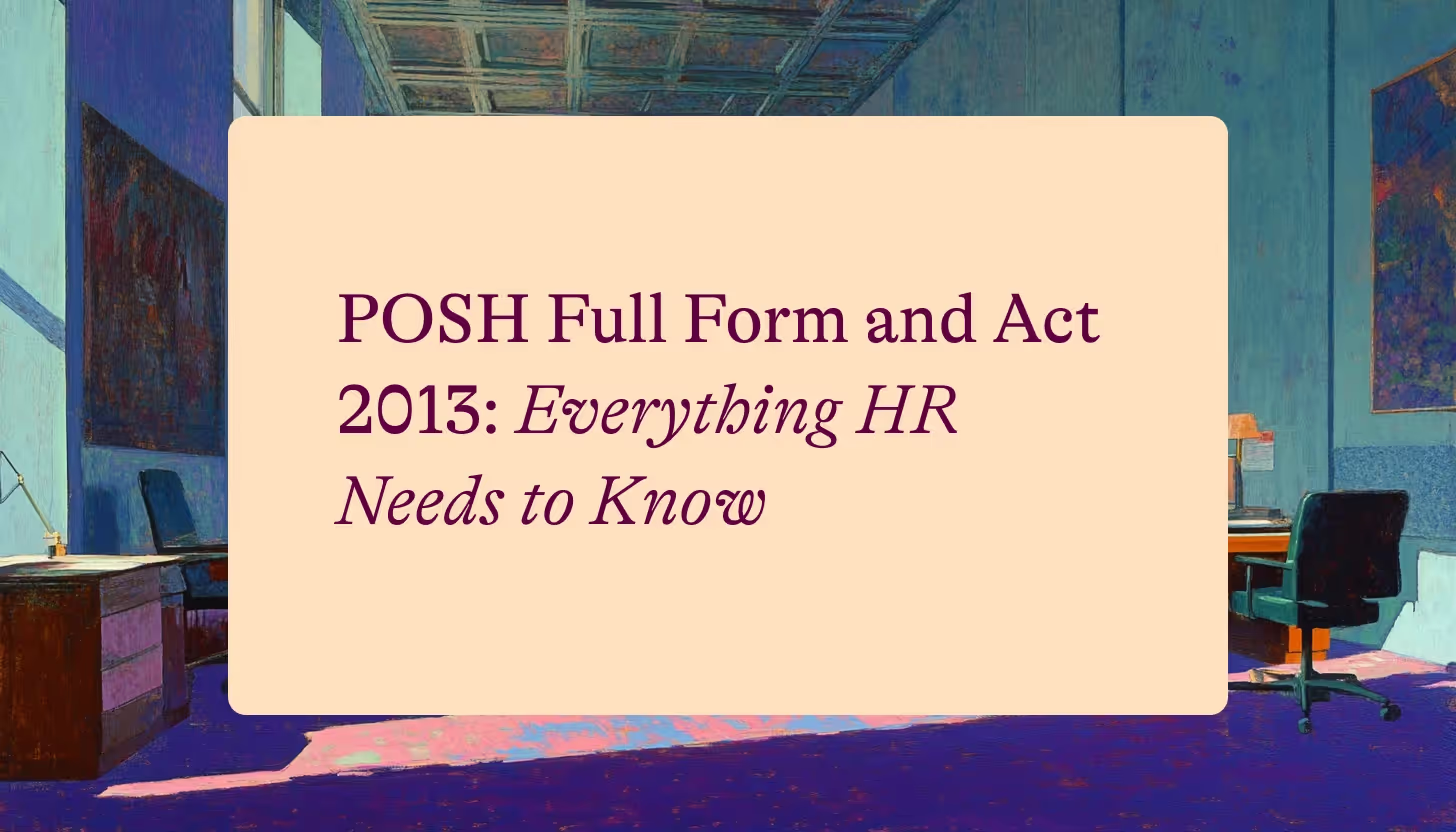For every new hire, the first official interaction with HR is more than just a handshake or a welcome email — it’s the joining letter. This document formalizes the employee’s appointment and sets the stage for their journey with the company.
If you’re a new HR professional, mastering the joining letter format is crucial. It’s one of the simplest yet most important documents in onboarding, acting as the bridge between offer acceptance and day-one employment.
What is a Joining Letter?
A joining letter (also called an appointment confirmation letter) is the written document given to a candidate when they accept a job offer and officially join the company.
It confirms:
- The employee’s acceptance of the offer
- The role, designation, and joining date
- Basic employment terms and reporting structure
- Employer’s acknowledgment of the new hire
Why is a Joining Letter Important?
For employees
- Confirms employment with the new company
- Provides proof of joining date for records and background checks
- Sets clear expectations on role and responsibilities
For employers
- Legally documents the appointment
- Avoids disputes about terms of joining
- Marks the formal start of the employer-employee relationship
[[cta-banner-5]]
Key Components of a Joining Letter Format
A professional joining letter should include:
- Employer details – Company letterhead, address, date, reference number
- Employee details – Full name, designation, employee ID (if pre-assigned)
- Joining confirmation – Acknowledgment of offer acceptance
- Role details – Designation, department, reporting manager
- Joining date – The exact date the employee starts work
- Terms of employment – Basic probation clause, salary (optional if already covered in appointment letter), and work hours
- Welcome note – A positive line to set the tone
- Authorized signatory – HR or employer signature
Joining Letter vs Appointment Letter vs Offer Letter
Joining Letter Format Samples
Here are three sample templates you can use directly:
1. Standard Joining Letter Format
[Company Letterhead]
Date: [DD/MM/YYYY]
To,
[Employee Name]
[Address]
Subject: Joining Letter
Dear [Employee Name],
We are pleased to confirm your joining with [Company Name] as [Designation] in the [Department], effective from [Joining Date].
You will be reporting to [Manager Name, Designation]. As per the terms of your appointment, you will be on probation for a period of [X months], after which your performance will be reviewed.
We welcome you to the [Company Name] family and look forward to a mutually rewarding association.
Sincerely,
[Authorized Signatory]
[Designation]
2. Short & Crisp Joining Letter
[Company Letterhead]
Date: [DD/MM/YYYY]
To, [Employee Name]
Dear [Employee],
We are happy to welcome you to [Company Name] as [Designation]. Your joining date will be [Joining Date], and you will report to [Manager Name].
Best wishes for a successful journey with us.
Sincerely,
[Authorized Signatory]
3. Joining Letter with Warm Welcome
[Company Letterhead]
Date: [DD/MM/YYYY]
To, [Employee Name]
Subject: Welcome to [Company Name]
Dear [Employee Name],
We are delighted to confirm your appointment with [Company Name] as [Designation], effective [Joining Date]. You will be part of the [Department], reporting to [Manager Name].
We are excited to have you onboard and look forward to your contributions. Together, let’s create great work and shared success.
Warm regards,
[Authorized Signatory]
Tips for HRs When Issuing Joining Letters
- Always issue the joining letter on official company letterhead
- Clearly state the joining date to avoid ambiguity
- Keep tone professional but welcoming — this sets culture expectations early
- Retain a signed copy from the employee for HR files
- Align the joining letter with the offer letter and appointment letter so there are no contradictions
Common Mistakes to Avoid
- Forgetting to mention the probation period or reporting manager
- Using generic templates without company branding
- Delaying issuance until after onboarding — it should be given on or before day one
- Not keeping a signed copy for HR records
FAQs About Joining Letters
1. Is a joining letter mandatory in India?
Not legally, but a joining letter is considered best practice for compliance and clarity.
2. How is a joining letter different from an appointment letter?
A joining letter confirms the employee has joined; the appointment letter details full terms of employment.
3. Can salary details be excluded from the joining letter?
Yes, if already covered in the offer/appointment letter. The joining letter can stay concise.
4. Who issues the joining letter?
Typically the HR manager or the company’s authorized signatory.
.avif)










.avif)














